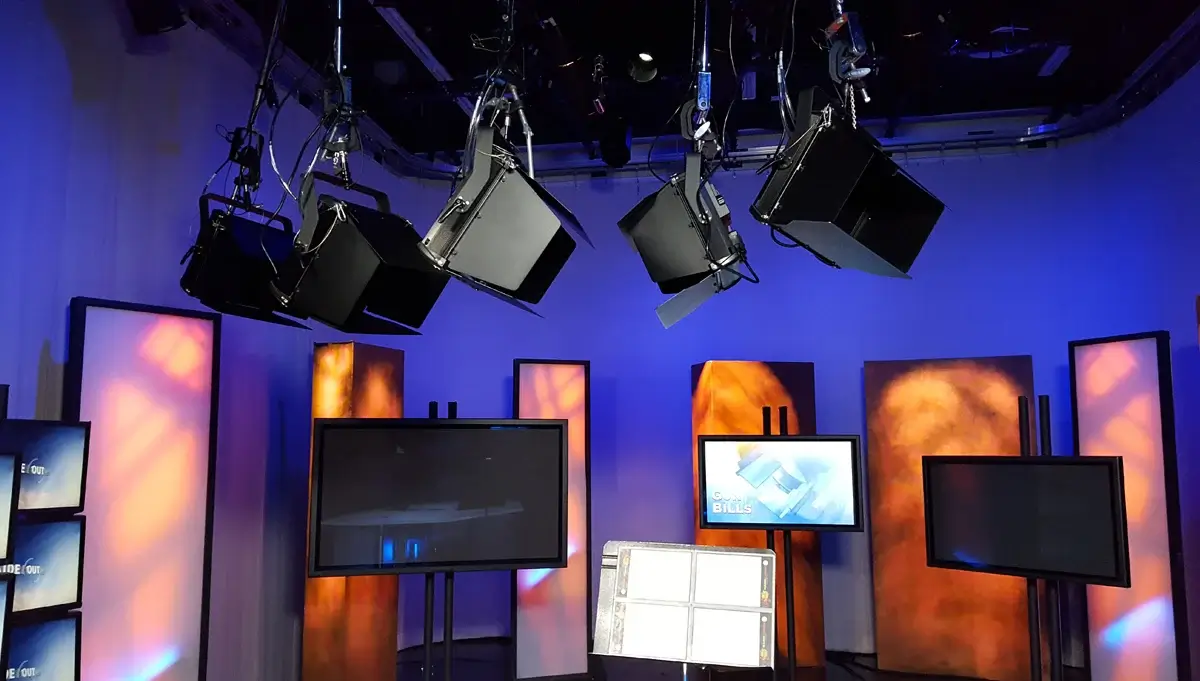As studio lighting technology continues to advance, industry professionals are exploring how innovations in LED technology, color control, and lighting systems shape modern broadcast environments. In this Industry Insights roundtable, top broadcast lighting suppliers discuss critical factors in selecting studio lighting equipment, from energy efficiency to achieving consistent color temperatures across multiple fixtures.
Key Considerations in Studio Lighting
Selecting the right lighting equipment involves balancing client needs, budget constraints, and technical requirements. Experts emphasize the importance of understanding production needs, studio dimensions, and flexibility requirements before making a choice. Here are the top factors industry experts advise considering:
- Energy Efficiency: LED technology is significantly more efficient, cutting operational costs and extending fixture lifespan.
- Consistent Color Temperature: Modern LEDs offer advanced calibration for consistent color, reducing the need for color correction gels.
- Remote Control Capabilities: IP-based lighting control systems enable remote troubleshooting and management, saving time and reducing on-site needs.
- Soft Lighting Trends: New soft lighting solutions, like LED panels and diffusers, provide a natural look on-camera, enhancing talent appearance.
LED Technology: A Game-Changer for Studio Lighting
Tim S. Kang, Principal Engineer for Aputure, points out that LED technology has now reached a level where it can fully replace incandescent lighting. LEDs provide lower power consumption, reduce heat output, and allow for more precise control. Kevin Lu of Ikan also highlights LEDs’ ability to deliver high color quality and manage heat, creating comfortable studio environments that protect equipment.
“LEDs have revolutionized broadcast lighting, reducing costs and enhancing color control,” Lu said.
Important Factors in Choosing Studio Lighting
Several experts shared insights on key considerations for selecting lighting instruments:
- Paul Flemming from ARRI emphasized starting with the client’s production needs, budget, and studio specifications.
- Sam Cercone of Brightline Lighting recommends considering studio grid height, set type, and fixture strength to ensure optimal lighting quality.
- Glen Harn of PrimeTime Lighting Systems advises focusing on light quality, longevity, and quiet operation, particularly for newscasts and interviews.
“Lighting designers should focus on high spectral fidelity and seamless connectivity to provide efficient, adaptable lighting solutions,” noted Tim S. Kang.
The Impact of Lighting Control Systems
Advanced lighting control systems are transforming studio efficiency and creativity. According to Paul Flemming, IP-based networks allow seamless integration with other AV systems, providing remote access to all devices for efficient troubleshooting. This flexibility is vital in modern broadcast environments, as it enhances workflow and reduces on-site adjustments.
Latest Innovations in Color Rendering and Temperature Control
High CRI (Color Rendering Index) scores are now achievable with LED fixtures, reaching up to 99 CRI for accurate color reproduction. Advanced measurement systems, such as TM30 and Spectral Similarity Index (SSI), are also used to assess color quality more precisely, helping studios maintain consistent color across fixtures.
“With today’s LEDs, studios can achieve near-perfect color rendering and consistent temperature control, which was challenging with older lighting technologies,” shared Brian Doran of ARRI.
Energy Efficiency and Sustainability in Studio Lighting
Energy-efficient lighting has become essential as studios aim to reduce costs and environmental impact. Kevin Lu explains that LEDs reduce electricity use, lower heat output, and align with sustainability goals. Glen Harn notes that sustainable lighting solutions with long-lasting, passive-cooled designs save on replacement costs and maintenance.
“Our lights are built to last beyond five years, supporting sustainability goals by minimizing waste and energy use,” said Harn.
Trends in Soft Lighting for On-Camera Talent
Soft lighting is now a go-to choice for creating flattering, natural visuals for on-air talent. LED panels and diffusers help reduce shadows and highlights, enhancing skin tones and improving overall visual quality. Soft lighting also reduces eye strain for talent, making it more comfortable during long broadcasts.
“Soft lighting, like LED panels, creates a more appealing on-screen appearance while enhancing comfort for talent,” said Kevin Lu.
From energy-efficient LED advancements to soft lighting trends and IP-based control systems, the landscape of studio lighting is continually evolving. These innovations provide broadcast studios with enhanced flexibility, control, and cost efficiency. With insights from industry experts, studios can make informed choices to create high-quality, sustainable lighting setups that meet both technical and aesthetic needs.













